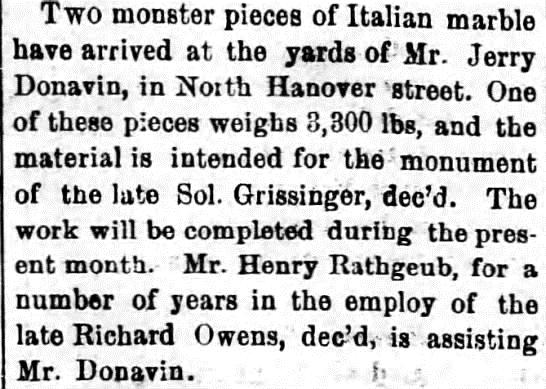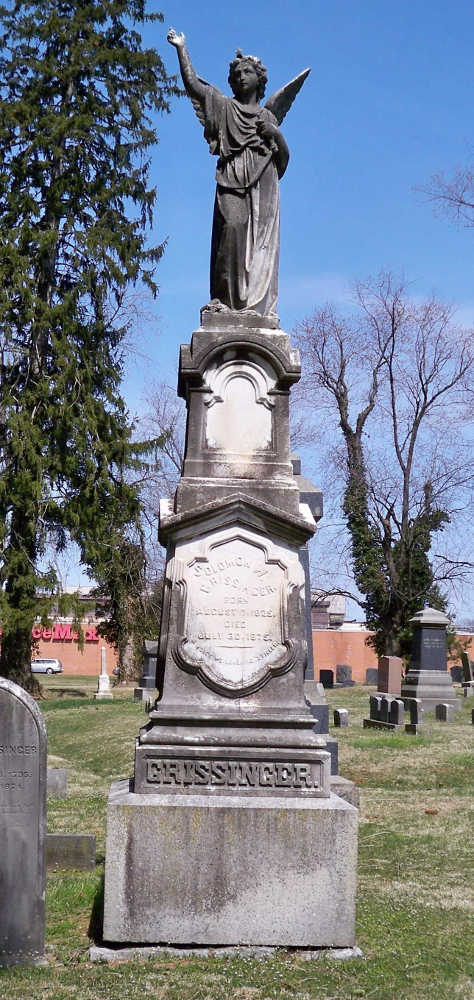“Carlisle’s strongest white man was “French George” who had a brother “French Ory,” and a sister who was the wife of Jimmy McCarter the carpet weaver. Rathgueb was the family name. We question if the old town has since boasted of male citizens of equal strength.”1
“French Ory” was Henry Rathgueb. He was born in France and arrived in Carlisle with members of his family about 1850 when he was 14 years old. At about the same time, the marble yard of Owens & Richards was established producing monuments, grave stones, tombs, door and window sills, mantles, steps, etc. It is likely that Henry was trained as a stone cutter at Owens because he worked there for many years.2
Other marble yards opened in Carlisle in the 1850s and 1860s. In 1856, a Mr. Hoffer opened a marble yard and in 1869 Charles D. Halbert. Both were out of business within a year, probably because they couldn’t compete with Owens. Among his many works, Owens designed the ten-foot Italian marble gothic monument surmounted by a cross in the Noble plot in Carlisle’s Old Graveyard as well as the Italian marble slab on the grave of James Hamilton, Esq. His most prominent monument stands on Carlisle’s Court House Square in memory of the town’s Civil War dead.
Richard Owens died in February 1876. His sons carried on the business, but whether Henry worked for them is unknown. In the spring of 1876, Jerry Donavin, who had opened a marble yard in Carlisle in 1875, received two pieces of Italian marble to make a monument for the late Solomon Grissinger. The marble weighed 3,300 pounds and Donavin employ Henry to assist him.3
Henry’s nephew, John McCarter was also a marble cutter. In 1875, he opened a marble yard on North Bedford Street and Henry may have worked with him also. McCarter died of consumption on November 21, 1878 aged 25.4 Henry would die six months later of congestion of the brain.
Henry had been naturalized in the Court House on August 28, 1857.5 He and his mother lived with his brother-in-law’s family until Henry married Ellen Hecker about 1861.6 Henry and his family lived on South West Street. In 1870 their household consisted of sons Henry and Charles, daughters Sarah and Julia and his mother Ursula. They had two more children born in the 1870s; Minnie in 1875 and Frank in 1879.
Henry died on May 15, 1879, two weeks before his son Frank was born.7 His obituary stated that he was a marble cutter and was better known as “French Orey.” It also stated that Henry was a “hard-working, industrious man and left a widow and six children to the cold charities of the world” 8 Henry had served with Co. H. 9th Regiment, PA Voluntary Cavalry during the Civil War.9 While he may have carved many elaborate tombstones during his career, his tombstone in Carlisle’s Old Graveyard, provided by the U. S. Government for deceased Union veterans,10 simply reads “H. M. Rathgueb 1836-1879.”


